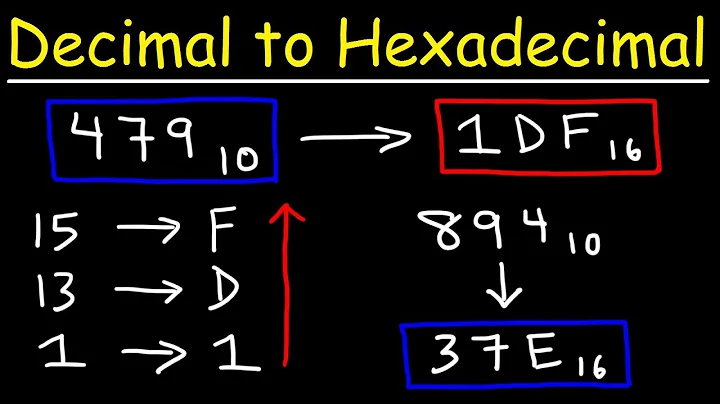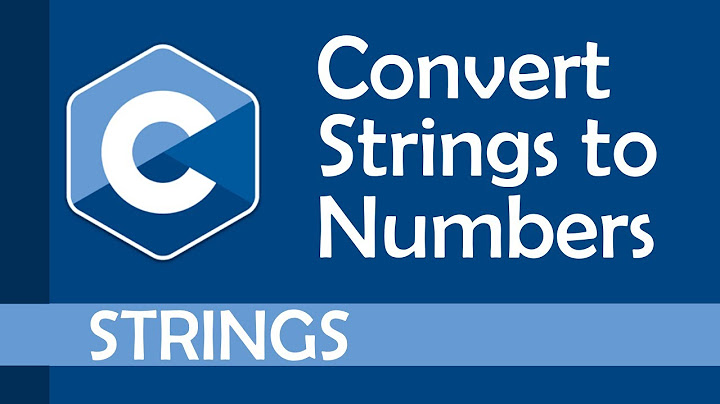How to convert an int to a hex string?
Solution 1
You are looking for the chr function.
You seem to be mixing decimal representations of integers and hex representations of integers, so it's not entirely clear what you need. Based on the description you gave, I think one of these snippets shows what you want.
>>> chr(0x65) == '\x65'
True
>>> hex(65)
'0x41'
>>> chr(65) == '\x41'
True
Note that this is quite different from a string containing an integer as hex. If that is what you want, use the hex builtin.
Solution 2
This will convert an integer to a 2 digit hex string with the 0x prefix:
strHex = "0x%0.2X" % integerVariable
Solution 3
What about hex()?
hex(255) # 0xff
If you really want to have \ in front you can do:
print '\\' + hex(255)[1:]
Solution 4
Let me add this one, because sometimes you just want the single digit representation
( x can be lower, 'x', or uppercase, 'X', the choice determines if the output letters are upper or lower.):
'{:x}'.format(15)
> f
And now with the new f'' format strings you can do:
f'{15:x}'
> f
To add 0 padding you can use 0>n:
f'{2034:0>4X}'
> 07F2
NOTE: the initial 'f' in
f'{15:x}'is to signify a format string
Solution 5
Try:
"0x%x" % 255 # => 0xff
or
"0x%X" % 255 # => 0xFF
Python Documentation says: "keep this under Your pillow: http://docs.python.org/library/index.html"
Related videos on Youtube
pynoob
Updated on May 12, 2022Comments
-
pynoob almost 2 years
I want to take an integer (that will be <= 255), to a hex string representation
e.g.: I want to pass in
65and get out'\x41', or255and get'\xff'.I've tried doing this with the
struct.pack('c',65), but that chokes on anything above9since it wants to take in a single character string. -
pacha almost 12 yearsI suppose you mean
"#%6x" % random.randint(0x0, 0xFFFFFF). (There is a missing%before6andrandinttakes 2 parameters -lower and upper bounds-) -
diedthreetimes over 11 yearsI thought chr converted integers to ascii. In which case chr(65) = 'A'. Is this a new addition?
-
 Mike Graham over 11 years@diedthreetimes,
Mike Graham over 11 years@diedthreetimes,chrdoes not involve ASCII at all--it simply takes a number and makes a one-byte bytestring where the ordinal value of the byte is the number. ASCII and ASCII-compatible encodings come into play when you write and display bytestrings. -
 Mike Graham over 11 years@diedthreetimes, For example, they come in by making
Mike Graham over 11 years@diedthreetimes, For example, they come in by making'A'another way to write and display'\x41'. Allstrreally cares about is the fact this is sixty-five. To make things understandable and usable by humans, it often becomes an A. -
Janus Troelsen over 11 yearsshould be %06x if you don't want spaces
-
 Glenn 'devalias' Grant almost 8 years
Glenn 'devalias' Grant almost 8 yearsrepr(chr(255)) # '\xff'also achieves this -
Samuel about 7 yearsI suggest to edit the code here and change it to this: strHex = "0x%0.2X" % integerVariable. (I wasn't able to edit myself.)
-
 Sean D. about 6 yearsThe amount of time it has taken me to find struct.pack('B', <integer>) is staggering. Thank you.
Sean D. about 6 yearsThe amount of time it has taken me to find struct.pack('B', <integer>) is staggering. Thank you. -
MFT over 5 yearsFor reference on this neat feature, PEP 498 -- Literal String Interpolation
-
 Pavel Sapehin about 4 yearsIMHO, a bit more "readable" option can be '0x{:X}'.format(15) (notice X is in uppercase). For 2034 it will print 0x7F2 instead of 7f2
Pavel Sapehin about 4 yearsIMHO, a bit more "readable" option can be '0x{:X}'.format(15) (notice X is in uppercase). For 2034 it will print 0x7F2 instead of 7f2 -
 James Stevens almost 4 years
James Stevens almost 4 yearshex(int(n,x))[2:]- not sure which is faster :) -
grep about 3 years
"%#x" % 255:) -
JPT about 3 yearsWell... no. I tried
hex(hash(text))and it produced a negative integer which resulted in a hex string with minus sign. Who did implement this? -
Luc about 3 years@JPT I don't understand your question. If the value is negative, then obviously the hex value will have a minus sign. Why would that be different when writing in hexadecimal, binary, decimal, or any other number system? Or are you looking for the in-memory representation, where there is a bit that determines the sign by being set or unset?
-
JPT about 3 yearsWell, the computer scientist is expecting negative hex to be something starting with a sign flag, so for example FFFx xxxx or 8000 xxxx, not an actual sign. I've never ever seen a hex with a minus sign before. But if you put it like that... ;)
-
Martin Thoma about 2 yearsThis should be more upvoted. f-strings for the win :-)








